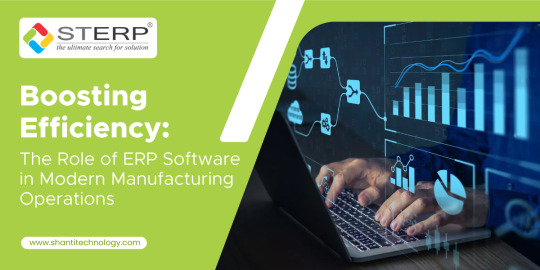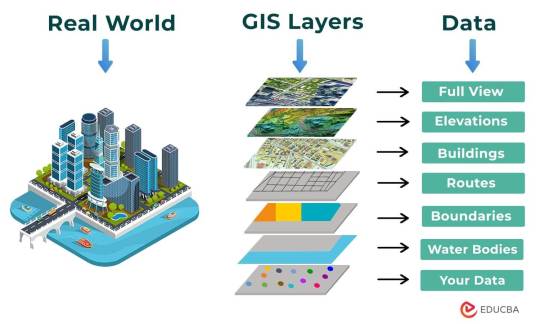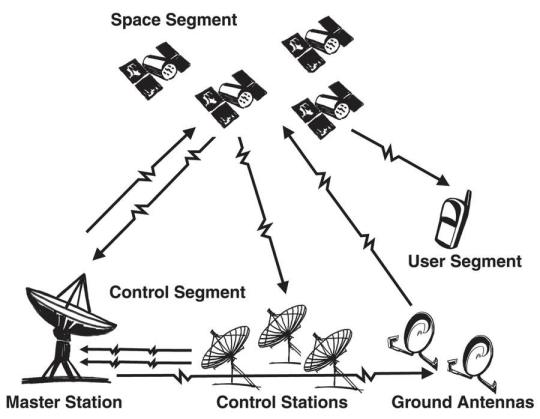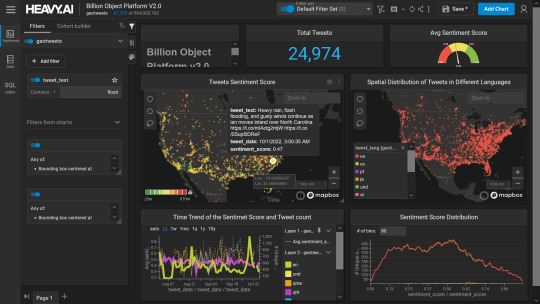#logistics and distribution software
Explore tagged Tumblr posts
Text
Making Distribution and Logistics Services More Efficient for Publishers with 7Search PPC

Introduction
Effective logistics and distribution services are essential for publishers to reach their target audience and maximize their success in the ever-changing publishing sector. Pay-Per-Click (PPC) advertising from 7Search PPC is one such method that is gaining traction. Publishers may increase their reach, optimize campaigns, and boost conversion rates by incorporating PPC into their logistics and distribution plans. We'll go into the value of logistics and distribution services for publishers in this blog article, as well as examine 7Search PPC's advantages and talk about how it may help publishers in the market today.
The Value of Distribution and Logistics to Publishers
For publishers, reaching the proper audience with their material in an efficient manner is essential to their success. Timely delivery and accessibility of published information are greatly aided by effective logistics and distribution services. These services include order processing, warehousing, transportation, and inventory management. Publishers may streamline their operations, cut expenses, and retain customer happiness by collaborating with reputable logistics companies. However, even the best publications risk being overlooked without a targeted marketing strategy.
To improve logistics and distribution, use 7Search PPC.
Publishers have access to a priceless tool through 7Search PPC to enhance their distribution and logistical efforts. Publishers can place bids on precise keywords associated with their publications via PPC advertising. The publisher's advertising is prominently displayed in search engine results when visitors use these keywords, resulting in targeted traffic to their website. Publishers who use 7Search PPC in their logistics and distribution plans can take advantage of the following advantages:
Increased visibility: PPC advertising help publishers reach a bigger audience and make sure that potential readers who are actively looking for relevant material discover their articles.
Targeting with precision: To increase the likelihood of conversions and engagement, publishers can accurately target their audience based on demographics, location, and search intent.
Cost-effective strategy: 7Search PPC is a cost-effective marketing technique because publishers only pay when their advertisements are clicked. Furthermore, the option to set budget ceilings enables publishers to keep tabs on their advertising costs.
Real-time data: Publishers may get comprehensive statistics from 7Search PPC, including information on click-through rates, conversion rates, and keyword performance. Publishers can improve their campaigns, hone their tactics, and more efficiently deploy money thanks to this information.
Enhanced brand awareness: Publishers can raise their brand's visibility in search results, which will help build recognition and trust with their target market.
Conclusion
Distribution and logistics services are essential for success in the cutthroat world of publishing. Publishers who use 7Search PPC can increase distribution and logistical efforts, effectively reaching their target audience, and boosting engagement. Publishers have the skills to optimize their marketing campaigns thanks to 7Search PPC's advantages, which include improved brand recognition, cost-effectiveness, accurate targeting, and better visibility. Publishers must modify their strategy as the publishing industry changes and use cutting-edge tools like 7Search PPC to stay on top of the game. Publishers may strengthen their brand, increase their readership, and succeed in the digital era by incorporating PPC advertising into their logistics and distribution services.
#logistics and distribution company#logistics and distribution#logistics and distribution services#logistics and distribution software#logistics and distribution companies#top logistics and distribution companies in usa#logistics and distribution institute#logistics and distribution industry#westset logistics and distribution#retail logistics and distribution#logistics and distribution platform
0 notes
Text
Discover the different types of inventory replenishment in warehouse systems! Learn how to optimize your stock levels and improve efficiency.
#InventoryReplenishment#WarehouseManagement#SupplyChain#InventoryControl#Logistics#DemandForecasting#AutomatedReplenishment#StockManagement#Efficiency#BusinessOperations#SmartWarehousing#LeanInventory#JustInTime#SafetyStock#Distribution#OrderFulfillment#RetailManagement#Technology#InventoryOptimization#OperationalExcellence#WarehouseEfficiency#warehouse#omneelab#automation#cloud#ai#omneelabwms#wms#software
0 notes
Text

3PShipping.net offers pick, pack, and ship services to streamline your Shopify fulfillment process. They also offer inventory management and online WMS systems to help you track your inventory. Check out 3PShipping.net today!
#3PL logistics#third-party shipping#freight forwarding#warehousing services#supply chain management#distribution solutions#e-commerce shipping#fulfillment services#shipping solutions#logistics management#transportation management#inventory management#order fulfillment#freight management#shipping software.
0 notes
Text
#logistics management software#logistics ERP solutions#ERP Software Solutions#supply chain management software#transportation management system#warehouse management software#distribution management software#e-commerce management software
1 note
·
View note
Text
100 Inventions by Women
LIFE-SAVING/MEDICAL/GLOBAL IMPACT:
Artificial Heart Valve – Nina Starr Braunwald
Stem Cell Isolation from Bone Marrow – Ann Tsukamoto
Chemotherapy Drug Research – Gertrude Elion
Antifungal Antibiotic (Nystatin) – Rachel Fuller Brown & Elizabeth Lee Hazen
Apgar Score (Newborn Health Assessment) – Virginia Apgar
Vaccination Distribution Logistics – Sara Josephine Baker
Hand-Held Laser Device for Cataracts – Patricia Bath
Portable Life-Saving Heart Monitor – Dr. Helen Brooke Taussig
Medical Mask Design – Ellen Ochoa
Dental Filling Techniques – Lucy Hobbs Taylor
Radiation Treatment Research – Cécile Vogt
Ultrasound Advancements – Denise Grey
Biodegradable Sanitary Pads – Arunachalam Muruganantham (with women-led testing teams)
First Computer Algorithm – Ada Lovelace
COBOL Programming Language – Grace Hopper
Computer Compiler – Grace Hopper
FORTRAN/FORUMAC Language Development – Jean E. Sammet
Caller ID and Call Waiting – Dr. Shirley Ann Jackson
Voice over Internet Protocol (VoIP) – Marian Croak
Wireless Transmission Technology – Hedy Lamarr
Polaroid Camera Chemistry / Digital Projection Optics – Edith Clarke
Jet Propulsion Systems Work – Yvonne Brill
Infrared Astronomy Tech – Nancy Roman
Astronomical Data Archiving – Henrietta Swan Leavitt
Nuclear Physics Research Tools – Chien-Shiung Wu
Protein Folding Software – Eleanor Dodson
Global Network for Earthquake Detection – Inge Lehmann
Earthquake Resistant Structures – Edith Clarke
Water Distillation Device – Maria Telkes
Portable Water Filtration Devices – Theresa Dankovich
Solar Thermal Storage System – Maria Telkes
Solar-Powered House – Mária Telkes
Solar Cooker Advancements – Barbara Kerr
Microbiome Research – Maria Gloria Dominguez-Bello
Marine Navigation System – Ida Hyde
Anti-Malarial Drug Work – Tu Youyou
Digital Payment Security Algorithms – Radia Perlman
Wireless Transmitters for Aviation – Harriet Quimby
Contributions to Touchscreen Tech – Dr. Annette V. Simmonds
Robotic Surgery Systems – Paula Hammond
Battery-Powered Baby Stroller – Ann Moore
Smart Textile Sensor Fabric – Leah Buechley
Voice-Activated Devices – Kimberly Bryant
Artificial Limb Enhancements – Aimee Mullins
Crash Test Dummies for Women – Astrid Linder
Shark Repellent – Julia Child
3D Illusionary Display Tech – Valerie Thomas
Biodegradable Plastics – Julia F. Carney
Ink Chemistry for Inkjet Printers – Margaret Wu
Computerised Telephone Switching – Erna Hoover
Word Processor Innovations – Evelyn Berezin
Braille Printer Software – Carol Shaw
⸻
HOUSEHOLD & SAFETY INNOVATIONS:
Home Security System – Marie Van Brittan Brown
Fire Escape – Anna Connelly
Life Raft – Maria Beasley
Windshield Wiper – Mary Anderson
Car Heater – Margaret Wilcox
Toilet Paper Holder – Mary Beatrice Davidson Kenner
Foot-Pedal Trash Can – Lillian Moller Gilbreth
Retractable Dog Leash – Mary A. Delaney
Disposable Diaper Cover – Marion Donovan
Disposable Glove Design – Kathryn Croft
Ice Cream Maker – Nancy Johnson
Electric Refrigerator Improvements – Florence Parpart
Fold-Out Bed – Sarah E. Goode
Flat-Bottomed Paper Bag Machine – Margaret Knight
Square-Bottomed Paper Bag – Margaret Knight
Street-Cleaning Machine – Florence Parpart
Improved Ironing Board – Sarah Boone
Underwater Telescope – Sarah Mather
Clothes Wringer – Ellene Alice Bailey
Coffee Filter – Melitta Bentz
Scotchgard (Fabric Protector) – Patsy Sherman
Liquid Paper (Correction Fluid) – Bette Nesmith Graham
Leak-Proof Diapers – Valerie Hunter Gordon
FOOD/CONVENIENCE/CULTURAL IMPACT:
Chocolate Chip Cookie – Ruth Graves Wakefield
Monopoly (The Landlord’s Game) – Elizabeth Magie
Snugli Baby Carrier – Ann Moore
Barrel-Style Curling Iron – Theora Stephens
Natural Hair Product Line – Madame C.J. Walker
Virtual Reality Journalism – Nonny de la Peña
Digital Camera Sensor Contributions – Edith Clarke
Textile Color Processing – Beulah Henry
Ice Cream Freezer – Nancy Johnson
Spray-On Skin (ReCell) – Fiona Wood
Langmuir-Blodgett Film – Katharine Burr Blodgett
Fish & Marine Signal Flares – Martha Coston
Windshield Washer System – Charlotte Bridgwood
Smart Clothing / Sensor Integration – Leah Buechley
Fibre Optic Pressure Sensors – Mary Lou Jepsen
#women#inventions#technology#world#history#invented#creations#healthcare#home#education#science#feminism#feminist
48 notes
·
View notes
Text


I made a thing!
Paint Program is a compilation of 26 Microsoft Paint files I made in the early 2000s, and recently rediscovered on an old laptop.
Zine 29 pages 5 x 7" Inkjet printed Edition of 8 2024
Concept, text, & design by Jo Minhinnett
Below I've written in diaristic detail about the logistics of designing and printing it with very few skills to do so...
Background:
I had this zine idea a few years ago when I was cleaning out my mom's condo and going through our old family laptops, from back in the day when a household only had one computer. The MS Paint files I found there were likely migrated from an even older desktop computer because I wouldn't have owned a laptop in 2003 when the earliest files were dated. The files were BMPs and PNGs and I made sure to retain all the original file names in the zine.
How I made it:
This was a headache to layout as the graphic files were geriatric and I wanted a true-to-screen Microsoft color palette printed on paper, which doesn't work when you convert the files to PDF or drop them into Photoshop (at least without a ton of work; photoshop doesn't recognize the colors in these image files and appears to auto approximate the color). I was out of my wheelhouse and I'm still curious to know how a designer would go about handling these files to get an authentic color match in Photoshop. I spent SO long trying to figure this all out and did a ton of print tests because I NEEDED that MS Paint palette to look turn of the 21st century and not have the colors changed to whatever present day Adobe software wanted them to be.
In the end, Microsoft speaks to Microsoft, so I laid it all out in Powerpoint and called it a day. This was kind of a 'give up' moment for me, but in hindsight, after all the tests, it proved to be the most logical and un-fussy way to do it. I also had to print the zine from Powerpoint if I wanted to get "true" MS Paint colors, which really slowed everything down and made it impossible to print many copies (crying inside a little). I printed on my Epson home printer and a stack of 50lb. premium matte Red River Paper (cardstock weight) which is almost too much and too heavy , but I loved how there was no bleed-through and how it made the book feel extra tactile. If you have memories of printing out your MS Paint creations on office paper circa 2003, you know how terrible and soggy that was and my heart goes out to you. I think I over-compensated with the 50lb. weight because of this traumatic memory. All to say, the inkjet print quality is simply astounding, pure matte heaven! I hand-punched the binding holes and hand-assembled each one with the plastic coil. I am over the moon with how it turned out.
Takeaways:
Making this zine was wonderful and nostalgic. My only hope is to have a bigger edition one day, and I'd definitely need to change the materials to be able to make it more affordable and distributable. I think the end result fetishizes MS Paint a lot because the print quality would never have been this good back then and on certain pages, it kind of fools me for a second. Like, wait a second, does that actually look good? For the most part, it doesn't though: the graphics were never created with artistic intention and I made sure to include files that were especially brainless (although I kept out any that were remotely vulgar). It's all part of the low-fi aesthetic that I love, which was dictated by the only widely available technology for the average consumer in the early 2000s. I wasn't particularly creative or intentional with the technology and I think that's really the point of this zine as an everyday record and artefact of Y2K teens.
6 notes
·
View notes
Text
You know what i'm still mad about?
Years ago i was part of a musical club in my local theater; this particular year we were doing Just So. It's a great show for kids and teens to be in, because there's a wide range of one shot characters that come in, sing a song and are off again, so a lot of actors have a speaking/singing role. For different purposes, some of the shows and rehearsals are filmed in theaters, but because copyright ruins many fun things, nobody but a small range of people have access to the recordings.
Luckily i had a friend. She was part of the club until the year prior and was now doing odd jobs around the theater because of an interest in the production side of things and she organized a copy, a single downloadable copy on CD we were supposed to take turns on and, most importantly, hand back in. Nobody except one of the technitians and my friend even knew about it and it was supposed stay that way for legal purposes.
Now you may ask, "Why didn't somebody dowload the show and just send it to the rest or copy it on USB or something?", which is a very fair question, so let me elaborate on the two reasons why that didn't happen.
First, people know much less about computers than you give them credit for. Even now, i often meet people, young people, people who have grown up in the computer age, fail the most basic tasks involving computers. They never took the time to explore their devices, usually have lives and hobbies not involving a computer and never faced a computer related task they weren't lead through step by step or couldn't hand of to a more competent person. Downloading something from a CD would already be a task too monumental to reasonably expect them to distribute the data therafter. "No matter.", i thought. "I can do just that when i get the CD.", not because i'm such a good and generous person, but because the logistic of circulating a CD between two dozen people frighten me. Doesn't matter how simple the principle, somebody always fucks up. Sadly, i never got to do that. At that point, another actor, let's call her Anna, enters the stage. Anna, generally speaking, is clever, popular within the theater crowd, very put together and, most importatnly, was at the right place at just the right time to receive the CD. Anna is the star of our next paragraph because
Some people got no respect for other people's property. After Anna got the CD, she just sort of disappeared for a good week. That is, she was available via phone and reacted to the repeated request, first to hand the CD over, later to return it to my friend, with reassurances and excuses of why she didn't get around to it yet. After ten days, after the CD was supposed to be back in pristine condition, what came back was a dull, disc shaped landscape of marks and scratches that looked like a round, oversized nail file. Turns out, she let it lay around where her little brother, then a painfully stupid and destructive child of about five years of age, could find it, access it, and rub it, data side down, over the floor to his little, moronic heart's content. The floor would also be its resting place, unttil it was picked up and handed in with the perfect innocence of somebody, who does not understand how a CD works and wouldn't care either way.
Now, my friend almost killed her then and there. Not just did she stick her neck out for this one physical copy, the digital copy was out of rech as well. Anna claimed she had downloaded the show, but "lost" it somehow. We could never verify what happened to it, because, as many people who don't know their way around computers, she was very reluctant to let anybody more competent than her take a look at her computer(unless necessity demands it, of course).
Two dozen people waiting eagerly, just for the only physical copy dying after the literal first person in the chain. An invaluable memory lost in the download folder, or watever folder her software uses to store data, on some morons laptop.
It's been ten years. I still can't fucking believe it.
4 notes
·
View notes
Note
question for alif: what caused you to found R.E.D and BOT CORPORATION?
This rant brought to you by the first-person perspective
It started with a thought. No, a knowing. An unshakable, thunderous, nuclear truth that detonated in my skull when I was 21—when the crust of this sad little planet finally cracked under the weight of my genius. I remember the moment vividly: I was halfway through my seventh protein bar of the morning (don’t ask why, you wouldn’t get it), staring into the flickering blue light of a broken vending machine, and it hit me. Not a vision. Not an idea. A revelation. The world was… incomplete. And only I could finish it.
So I built BOTCORP. Or rather—it built itself, out of the sheer gravitational pull of my ambition, coalescing like a galaxy around the singularity that is me. You think corporations are founded on market research? Capital? NO. BOTCORP erupted into existence because the cosmic code needed it to. It’s not a company. It’s an ontological inevitability. Like death. Or taxes. Or the heat death of the universe, if it wore a tailored suit and harvested biometric data faster than the speed of light.
People think it started with software and a warehouse. Wrong. It started with a mirror. A mirror I stared into for nine consecutive days, each second peeling back layers of human mediocrity until all that was left staring back was a divine blueprint—a screaming, incandescent idea-being screaming, “YOU ARE THE GOD OF INFRASTRUCTURE.”
So yeah. BOTCORP. Multi-quintillion dollar valuation? Cute. It’s not about the money. The money is just the byproduct, like radioactive ash from the reactor core of my soul. I don’t want to own the economy. I want to replace it. I want your entire life to run on systems I designed in a caffeine fugue at 3am during a manic episode that I later retroactively rebranded as a “vision sprint.”
And then there’s R.E.D. Registered Equipment Distributors. People ask, “Why not just call it BOTCORP Logistics or BOTCORP Shipping?” Because R.E.D. isn’t logistics. R.E.D. is RED. It’s blood. It’s the primal pulse of movement, of power, of the very concept of transfer incarnate. It’s not a child company—it’s my right arm, surgically removed, mechanically enhanced, and reattached with an energy gun and an energy relay theater will outlive GOD. It doesn’t distribute equipment. It births it into the world, fully formed, tagged, tracked, and blessed in the name of ME.
You think you bought a pallet jack? NO. That was a fragment of my subconscious, lovingly injected into your warehouse to watch you—to listen, to learn, to report back to me via a proprietary telemetry language based entirely on my old dreams and the sound of whales dying in sonar feedback loops.
BOTCORP doesn’t make products. BOTCORP makes reality compatible with my existence. It rewires cause and effect. It redefines supply and demand as submit or perish. Every market trend you see? I made that. Every stock surge? My twitching eyelid. Every “innovation” from a competitor? Me, two years ago, discarded in disgust because I found a way to do it using hydrophobic quantum thread and half a toothpick.
My employees? They’re not employees. They’re neurons. My management team? They’re echoes. My HR department? Psychological warfare technicians, each trained in 17 forms of passive aggression and one ancient Babylonian curse. The break room contains a shrine. Not by my order. They just… started building it. I’ve never asked them why. I already know.
Sometimes I forget where I end and BOTCORP begins. I try to walk down the street, and the stoplights blink in binary. Street names rearrange into acronyms. Children point and say “mommy, the god-king of machines is here.” I cough, and somewhere, an office tower in Dubai gets a firmware update.
And R.E.D.—ah, R.E.D.—its warehouses are alive. Not metaphorically. I mean they breathe. There are vents that inhale dust and exhale profit. Conveyor belts that scream lullabies to the pallets. Forklifts that argue with each other in machine tongues only I can translate. I once found a shipment of mining drills singing “Ave Maria.” We don’t question it anymore. We just ship faster.
Why did I do all this? Why did I create BOTCORP? Because the world was a sandbox and I was tired of pretending to be one of the children. Because every other business was a joke told in bad faith by small men in smaller suits. Because I saw the void and I said, “This would make a great distribution hub.”
I am not your competitor. I am not your peer. I am the whisper in your quarterly reports. I am the red dot on your supply graph. I am the sleep paralysis demon of capitalism, and my name is branded on the walls of time.
You want to stop me? Good luck. I already knew you would try. I factored your resistance into our Q3 forecasts. I’m not just five steps ahead. I’m already at your funeral, selling commemorative mugs and action figures of the children you never had.
So, why did I found BOTCORP?
Because I could.
Because no one told me not to.
Because this world didn’t have a god, and I was bored.
2 notes
·
View notes
Text
Top 10 Emerging Tech Trends to Watch in 2025
Technology is evolving at an unprecedented tempo, shaping industries, economies, and day by day lifestyles. As we method 2025, several contemporary technology are set to redefine how we engage with the sector. From synthetic intelligence to quantum computing, here are the important thing emerging tech developments to look at in 2025.

Top 10 Emerging Tech Trends In 2025
1. Artificial Intelligence (AI) Evolution
AI remains a dominant force in technological advancement. By 2025, we will see AI turning into greater sophisticated and deeply incorporated into corporations and personal programs. Key tendencies include:
Generative AI: AI fashions like ChatGPT and DALL·E will strengthen similarly, generating more human-like textual content, images, and even films.
AI-Powered Automation: Companies will more and more depend upon AI-pushed automation for customer support, content material advent, and even software development.
Explainable AI (XAI):��Transparency in AI decision-making becomes a priority, ensuring AI is greater trustworthy and comprehensible.
AI in Healthcare: From diagnosing sicknesses to robot surgeries, AI will revolutionize healthcare, reducing errors and improving affected person results.
2. Quantum Computing Breakthroughs
Quantum computing is transitioning from theoretical studies to real-global packages. In 2025, we will expect:
More powerful quantum processors: Companies like Google, IBM, and startups like IonQ are making full-size strides in quantum hardware.
Quantum AI: Combining quantum computing with AI will enhance machine studying fashions, making them exponentially quicker.
Commercial Quantum Applications: Industries like logistics, prescribed drugs, and cryptography will begin leveraging quantum computing for fixing complex troubles that traditional computer systems can not manage successfully.
3. The Rise of Web3 and Decentralization
The evolution of the net continues with Web3, emphasizing decentralization, blockchain, and user possession. Key factors consist of:
Decentralized Finance (DeFi): More economic services will shift to decentralized platforms, putting off intermediaries.
Non-Fungible Tokens (NFTs) Beyond Art: NFTs will find utility in actual estate, gaming, and highbrow belongings.
Decentralized Autonomous Organizations (DAOs): These blockchain-powered organizations will revolutionize governance systems, making choice-making more obvious and democratic.
Metaverse Integration: Web3 will further integrate with the metaverse, allowing secure and decentralized digital environments.
4. Extended Reality (XR) and the Metaverse
Virtual Reality (VR), Augmented Reality (AR), and Mixed Reality (MR) will retain to improve, making the metaverse extra immersive. Key tendencies consist of:
Lighter, More Affordable AR/VR Devices: Companies like Apple, Meta, and Microsoft are working on more accessible and cushty wearable generation.
Enterprise Use Cases: Businesses will use AR/VR for far flung paintings, education, and collaboration, lowering the want for physical office spaces.
Metaverse Economy Growth: Digital belongings, digital real estate, and immersive studies will gain traction, driven via blockchain technology.
AI-Generated Virtual Worlds: AI will play a role in developing dynamic, interactive, and ever-evolving virtual landscapes.
5. Sustainable and Green Technology
With growing concerns over weather alternate, generation will play a vital function in sustainability. Some key innovations include:
Carbon Capture and Storage (CCS): New techniques will emerge to seize and keep carbon emissions efficaciously.
Smart Grids and Renewable Energy Integration: AI-powered clever grids will optimize power distribution and consumption.
Electric Vehicle (EV) Advancements: Battery generation upgrades will cause longer-lasting, faster-charging EVs.
Biodegradable Electronics: The upward thrust of green digital additives will assist lessen e-waste.
6. Biotechnology and Personalized Medicine
Healthcare is present process a metamorphosis with biotech improvements. By 2025, we expect:
Gene Editing and CRISPR Advances: Breakthroughs in gene modifying will enable treatments for genetic disorders.
Personalized Medicine: AI and big statistics will tailor remedies based on man or woman genetic profiles.
Lab-Grown Organs and Tissues: Scientists will make in addition progress in 3D-published organs and tissue engineering.
Wearable Health Monitors: More superior wearables will music fitness metrics in actual-time, presenting early warnings for illnesses.
7. Edge Computing and 5G Expansion
The developing call for for real-time statistics processing will push aspect computing to the vanguard. In 2025, we will see:
Faster 5G Networks: Global 5G insurance will increase, enabling excessive-velocity, low-latency verbal exchange.
Edge AI Processing: AI algorithms will system information in the direction of the source, reducing the want for centralized cloud computing.
Industrial IoT (IIoT) Growth: Factories, deliver chains, and logistics will advantage from real-time facts analytics and automation.
Eight. Cybersecurity and Privacy Enhancements
With the upward thrust of AI, quantum computing, and Web3, cybersecurity will become even more essential. Expect:
AI-Driven Cybersecurity: AI will come across and prevent cyber threats extra effectively than traditional methods.
Zero Trust Security Models: Organizations will undertake stricter get right of entry to controls, assuming no entity is inherently sincere.
Quantum-Resistant Cryptography: As quantum computer systems turn out to be greater effective, encryption techniques will evolve to counter potential threats.
Biometric Authentication: More structures will rely on facial reputation, retina scans, and behavioral biometrics.
9. Robotics and Automation
Automation will hold to disrupt numerous industries. By 2025, key trends encompass:
Humanoid Robots: Companies like Tesla and Boston Dynamics are growing robots for commercial and family use.
AI-Powered Supply Chains: Robotics will streamline logistics and warehouse operations.
Autonomous Vehicles: Self-using automobiles, trucks, and drones will become greater not unusual in transportation and shipping offerings.
10. Space Exploration and Commercialization
Space era is advancing swiftly, with governments and private groups pushing the boundaries. Trends in 2025 include:
Lunar and Mars Missions: NASA, SpaceX, and other groups will development of their missions to establish lunar bases.
Space Tourism: Companies like Blue Origin and Virgin Galactic will make industrial area travel more reachable.
Asteroid Mining: Early-level research and experiments in asteroid mining will start, aiming to extract rare materials from area.
2 notes
·
View notes
Text
Boosting Efficiency: The Role of ERP Software in Modern Manufacturing Operations
In today's fast-paced manufacturing landscape, efficiency is not just a desirable trait; it's a necessity. To stay competitive and meet the demands of the market, manufacturers must streamline their processes, optimize resource utilization, and enhance decision-making capabilities. This is where Enterprise Resource Planning (ERP) software steps in as a game-changer. In this article, we'll delve into the pivotal role of ERP systems in revolutionizing manufacturing operations, particularly in India's thriving industrial sector.

Understanding ERP for Manufacturing Industry
ERP systems for manufacturing are comprehensive software solutions designed to integrate and automate core business processes such as production planning, inventory management, supply chain logistics, financial management, and human resources. By consolidating data and operations into a unified platform, ERP empowers manufacturers with real-time insights, facilitates collaboration across departments, and enables informed decision-making.
Streamlining Operations with ERP Solutions
In the dynamic environment of manufacturing, where every minute counts, efficiency gains translate directly into cost savings and competitive advantages. ERP software for manufacturing offers a multitude of features that streamline operations and drive efficiency:
1. Enhanced Production Planning: ERP systems enable manufacturers to create accurate production schedules based on demand forecasts, resource availability, and production capacity. By optimizing production timelines and minimizing idle time, manufacturers can fulfill orders promptly and reduce lead times.
2. Inventory Management: Efficient inventory management is crucial for balancing supply and demand while minimizing holding costs. ERP software provides real-time visibility into inventory levels, automates reorder points, and facilitates inventory optimization to prevent stockouts and overstock situations.
3. Supply Chain Optimization: ERP solutions for manufacturing integrate supply chain processes from procurement to distribution, enabling seamless coordination with suppliers and distributors. By optimizing procurement cycles, minimizing transportation costs, and reducing lead times, manufacturers can enhance supply chain resilience and responsiveness.
4. Quality Control: Maintaining product quality is paramount in manufacturing to uphold brand reputation and customer satisfaction. ERP systems offer quality management modules that streamline inspection processes, track product defects, and facilitate corrective actions to ensure adherence to quality standards.
5. Financial Management: Effective financial management is essential for sustaining manufacturing operations and driving profitability. ERP software provides robust accounting modules that automate financial transactions, streamline budgeting and forecasting, and generate comprehensive financial reports for informed decision-making.
6. Human Resource Management: People are the cornerstone of manufacturing operations, and managing workforce efficiently is critical for productivity and employee satisfaction. ERP systems for manufacturing include HR modules that automate payroll processing, manage employee records, and facilitate workforce planning to align staffing levels with production demands.
The Advantages of ERP for Manufacturing Companies in India
India's manufacturing sector is undergoing rapid transformation, fueled by factors such as government initiatives like "Make in India," technological advancements, and globalization. In this dynamic landscape, ERP software plays a pivotal role in empowering manufacturing companies to thrive and remain competitive:
1. Scalability: ERP solutions for manufacturing are scalable, making them suitable for companies of all sizes – from small and medium enterprises (SMEs) to large conglomerates. Whether a company is expanding its operations or diversifying its product portfolio, ERP systems can adapt to evolving business needs and support growth.
2. Compliance: Regulatory compliance is a significant concern for manufacturing companies in India, given the complex regulatory environment. ERP software incorporates compliance features that ensure adherence to industry regulations, tax laws, and reporting requirements, minimizing the risk of non-compliance penalties.
3. Localization: ERP vendors catering to the Indian manufacturing sector offer localized solutions tailored to the unique requirements of the Indian market. From multi-currency support to GST compliance features, these ERP systems are equipped with functionalities that address the specific challenges faced by Indian manufacturers.
4. Cost Efficiency: Implementing ERP software for manufacturing entails upfront investment, but the long-term benefits far outweigh the costs. By streamlining processes, optimizing resource utilization, and reducing operational inefficiencies, ERP systems drive cost savings and improve overall profitability.
5. Competitive Edge: In a fiercely competitive market, manufacturing companies in India must differentiate themselves through operational excellence and agility. ERP software equips companies with the tools and insights needed to outperform competitors, adapt to market dynamics, and capitalize on emerging opportunities.
Choosing the Right ERP Software for Manufacturing
Selecting the right ERP solution is crucial for maximizing the benefits and ensuring a smooth implementation process. When evaluating ERP software for manufacturing, companies should consider the following factors:
1. Industry-specific functionality: Choose an ERP system that offers industry-specific features and functionalities tailored to the unique requirements of manufacturing operations.
2. Scalability and flexibility: Ensure that the ERP software can scale with your business and accommodate future growth and expansion.
3. Ease of integration: Look for ERP systems that seamlessly integrate with existing software applications, such as CRM systems, MES solutions, and IoT devices, to create a cohesive technology ecosystem.
4. User-friendliness: A user-friendly interface and intuitive navigation are essential for ensuring widespread adoption and maximizing user productivity.
5. Vendor support and expertise: Select a reputable ERP vendor with a proven track record of success in the manufacturing industry and robust customer support services.
Conclusion
In conclusion, ERP software has emerged as a cornerstone of modern manufacturing operations, empowering companies to enhance efficiency, drive growth, and maintain a competitive edge in the global market. For manufacturing companies in India, where agility, scalability, and compliance are paramount, implementing the right ERP solution can be a transformative investment that paves the way for sustainable success. By harnessing the power of ERP, manufacturers can optimize processes, streamline operations, and unlock new opportunities for innovation and growth in the dynamic landscape of the manufacturing industry.
#ERP software providers in India#Manufacturing enterprise resource planning#ERP systems for manufacturing companies#ERP system for manufacturing industry#ERP for manufacturing companies#ERP software for engineering company#ERP software for engineering companies in India#ERP software for engineering companies in Mumbai#ERP solution providers in India#ERP for manufacturing industry#ERP systems for manufacturing#ERP solutions for manufacturing#ERP software manufacturing industry#ERP for manufacturing company in India#India
8 notes
·
View notes
Text
GIS In Our Daily Lives
The involvement of Geographic Information Systems (GIS) in our daily lives is pervasive, influencing and enhancing various aspects across different sectors. The integration of GIS into everyday activities has become integral for decision-making, planning, and optimizing resources. GIS helps city planners and transportation experts to provide them with information like maps, satellite pictures, population statistics, and infrastructure data. GIS helps them make better decisions when designing cities and transportation systems that are sustainable and good for the environment.

The following points elucidate the notable involvement of GIS in our daily lives:
Navigation and Location Services: GIS provides monitoring functions through the visual display of spatial data and precise geographical positioning of monitored vehicles, whereas GPS provides accurate, clear, and precise information on the position and navigation of a monitored or tracked vehicle in real-time and at the exact location.GIS is at the core of navigation applications and location-based services on smartphones. It enables accurate mapping, real-time navigation, and geolocation services, assisting individuals in finding locations, planning routes, and navigating unfamiliar areas.

E-Commerce and Delivery Services: GIS software is a powerful tool for supply chain network planning. It helps determine the optimal location for distribution centers, warehouses, or other supply facilities. GIS is utilized in logistics and delivery services for optimizing routes, tracking shipments, and ensuring timely deliveries. E-commerce platforms leverage GIS to enhance the efficiency of their supply chain and last-mile delivery processes.

Weather Forecasting and Disaster Management: Many states are using GIS dashboard to monitor the rainfall across the state, on a real-time basis, from the data shared by rain sensors installed at various locationsGIS plays a crucial role in weather forecasting and disaster management. It assists meteorologists in analyzing spatial data, predicting weather patterns, and facilitating timely responses to natural disasters by mapping affected areas and coordinating emergency services.

Healthcare Planning and Disease Monitoring: Geographic Information Systems enable the visualization and monitoring of infectious diseases. Additionally GIS records and displays the necessary information that health care needs of the community as well as the available resources and materials. GIS supports public health initiatives by mapping the spread of diseases, analyzing healthcare resource distribution, and assisting in the planning of vaccination campaigns. It aids in identifying high-risk areas and optimizing healthcare service delivery.

Social Media and Geo-tagging: GIS also helps in geotagging and other location related information in posts, it’s tools can map and visualize the spatial distribution of social media activity. This analysis can reveal trends, hotspots, and patterns in user engagement across different geographic areas. Many social media platforms incorporate GIS for geo-tagging, allowing users to share their location and experiences. This feature enhances social connectivity and facilitates the sharing of location-specific information.

Smart City Initiatives: The Geographic Information System (GIS) offers advanced and user-friendly capabilities for Smart City projects and allows to capture, store and manipulate, analyze and visualize spatially referenced data. It is used for spatial analysis and modeling. It is the cornerstone of smart city planning, enabling the integration of data for efficient urban management. It supports initiatives related to traffic management, waste disposal, energy consumption, and overall infrastructure development.

Education and Research: GIS is increasingly utilized in education and research for visualizing and analyzing spatial data. It enables students and researchers to explore geographic relationships, conduct field studies, and enhance their understanding of various subjects.

Agricultural Management and Precision Farming: Farmers leverage GIS to optimize agricultural practices by analyzing soil conditions, crop health, and weather patterns. Precision farming techniques, facilitated by GIS, contribute to increased crop yields and sustainable farming practices.

Real Estate and Property Management: In the real estate sector, GIS aids in property mapping, land valuation, and site selection. It provides real estate professionals with valuable insights into spatial relationships, market trends, and optimal development opportunities.

Tourism and Recreation: GIS enhances the tourism industry by providing interactive maps, route planning, and location-based information. It assists tourists in exploring destinations, finding attractions, and navigating efficiently.

The broad and varied involvement of GIS in our daily lives underscores its significance as a technology that not only facilitates geographic data analysis but also contributes to the efficiency, safety, and interconnectedness of modern society. As GIS applications continue to evolve, their impact on daily activities is expected to further expand and refine.
#gis#architectdesign#architecture#city#education#geographic information system(gis)#geographical indication
14 notes
·
View notes
Text

3PShipping.net offers pick, pack, and ship services to streamline your Shopify fulfillment process. They also offer inventory management and online WMS systems to help you track your inventory. Check out 3PShipping.net today!
#3PL logistics#third-party shipping#freight forwarding#warehousing services#supply chain management#distribution solutions#e-commerce shipping#fulfillment services#shipping solutions#logistics management#transportation management#inventory management#order fulfillment#freight management#shipping software.
0 notes
Text
youtube
MAGTEC Cloud ERP Software for Trading and Distribution offers a powerful suite of features to streamline business operations. It includes real-time inventory management, procurement and sales management, warehouse and logistics integration, and financial tools like automated invoicing and tax handling. The software automates order management with features like backorder handling and CRM integration, and supports communication via WhatsApp, email, and SMS. With robust reporting and analytics, a mobile app for on-the-go management, and comprehensive supplier and vendor management
Visit our website www.magtecsolutions.com
2 notes
·
View notes
Text
Valkey 7.2 On Memorystore: Open-Source Key-Value Service

The 100% open-source key-value service Memorystore for Valkey is launched by Google Cloud.
In order to give users a high-performance, genuinely open-source key-value service, the Memorystore team is happy to announce the preview launch of Valkey 7.2 support for Memorystore.
Memorystore for Valkey
A completely managed Valkey Cluster service for Google Cloud is called Memorystore for Valkey. By utilizing the highly scalable, reliable, and secure Valkey service, Google Cloud applications may achieve exceptional performance without having to worry about handling intricate Valkey deployments.
In order to guarantee high availability, Memorystore for Valkey distributes (or “shards”) your data among the primary nodes and duplicates it among the optional replica nodes. Because Valkey performance is greater on many smaller nodes rather than fewer bigger nodes, the horizontally scalable architecture outperforms the vertically scalable architecture in terms of performance.
Memorystore for Valkey is a game-changer for enterprises looking for high-performance data management solutions reliant on 100% open source software. It was added to the Memorystore portfolio in response to customer demand, along with Memorystore for Redis Cluster and Memorystore for Redis. From the console or gcloud, users can now quickly and simply construct a fully-managed Valkey Cluster, which they can then scale up or down to suit the demands of their workloads.
Thanks to its outstanding performance, scalability, and flexibility, Valkey has quickly gained popularity as an open-source key-value datastore. Valkey 7.2 provides Google Cloud users with a genuinely open source solution via the Linux Foundation. It is fully compatible with Redis 7.2 and the most widely used Redis clients, including Jedis, redis-py, node-redis, and go-redis.
Valkey is already being used by customers to replace their key-value software, and it is being used for common use cases such as caching, session management, real-time analytics, and many more.
Customers may enjoy a nearly comparable (and code-compatible) Valkey Cluster experience with Memorystore for Valkey, which launches with all the GA capabilities of Memorystore for Redis Cluster. Similar to Memorystore for Redis Cluster, Memorystore for Valkey provides RDB and AOF persistence, zero-downtime scaling in and out, single- or multi-zone clusters, instantaneous integrations with Google Cloud, extremely low and dependable performance, and much more. Instances up to 14.5 TB are also available.
Memorystore for Valkey, Memorystore for Redis Cluster, and Memorystore for Redis have an exciting roadmap of features and capabilities.
The momentum of Valkey
Just days after Redis Inc. withdrew the Redis open-source license, the open-source community launched Valkey in collaboration with the Linux Foundation in March 2024 (1, 2, 3). Since then, they have had the pleasure of working with developers and businesses worldwide to propel Valkey into the forefront of key-value data stores and establish it as a premier open source software (OSS) project. Google Cloud is excited to participate in this community launch with partners and industry experts like Snap, Ericsson, AWS, Verizon, Alibaba Cloud, Aiven, Chainguard, Heroku, Huawei, Oracle, Percona, Ampere, AlmaLinux OS Foundation, DigitalOcean, Broadcom, Memurai, Instaclustr from NetApp, and numerous others. They fervently support open source software.
The Valkey community has grown into a thriving group committed to developing Valkey the greatest open source key-value service available thanks to the support of thousands of enthusiastic developers and the former core OSS Redis maintainers who were not hired by Redis Inc.
With more than 100 million unique active users each month, Mercado Libre is the biggest finance, logistics, and e-commerce company in Latin America. Diego Delgado discusses Valkey with Mercado Libre as a Software Senior Expert:
At Mercado Libre, Google Cloud need to handle billions of requests per minute with minimal latency, which makes caching solutions essential. Google Cloud especially thrilled about the cutting-edge possibilities that Valkey offers. They have excited to investigate its fresh features and add to this open-source endeavor.”
The finest is still to come
By releasing Memorystore for Valkey 7.2, Memorystore offers more than only Redis Cluster, Redis, and Memcached. And Google Cloud is even more eager about Valkey 8.0’s revolutionary features. Major improvements in five important areas performance, reliability, replication, observability, and efficiency were introduced by the community in the first release candidate of Valkey 8.0. With a single click or command, users will be able to accept Valkey 7.2 and later upgrade to Valkey 8.0. Additionally, Valkey 8.0 is compatible with Redis 7.2, exactly like Valkey 7.2 was, guaranteeing a seamless transition for users.
The performance improvements in Valkey 8.0 are possibly the most intriguing ones. Asynchronous I/O threading allows commands to be processed in parallel, which can lead to multi-core nodes working at a rate that is more than twice as fast as Redis 7.2. From a reliability perspective, a number of improvements provided by Google, such as replicating slot migration states, guaranteeing automatic failover for empty shards, and ensuring slot state recovery is handled, significantly increase the dependability of Cluster scaling operations. The anticipation for Valkey 8.0 is already fueling the demand for Valkey 7.2 on Memorystore, with a plethora of further advancements across several dimensions (release notes).
Similar to how Redis previously expanded capability through modules with restricted licensing, the community is also speeding up the development of Valkey’s capabilities through open-source additions that complement and extend Valkey’s functionality. The capabilities covered by recently published RFCs (“Request for Comments”) include vector search for extremely high performance vector similarly search, JSON for native JSON support, and BloomFilters for high performance and space-efficient probabilistic filters.
Former vice president of Gartner and principal analyst of SanjMo Sanjeev Mohan offers his viewpoint:
The advancement of community-led initiatives to offer feature-rich, open-source database substitutes depends on Valkey. Another illustration of Google’s commitment to offering really open and accessible solutions for customers is the introduction of Valkey support in Memorystore. In addition to helping developers looking for flexibility, their contributions to Valkey also support the larger open-source ecosystem.
It seems obvious that Valkey is going to be a game-changer in the high-performance data management area with all of the innovation in Valkey 8.0, as well as the open-source improvements like vector search and JSON, and for client libraries.
Valkey is the secret to an OSS future
Take a look at Memorystore for Valkey right now, and use the UI console or a straightforward gcloud command to establish your first cluster. Benefit from OSS Redis compatibility to simply port over your apps and scale in or out without any downtime.
Read more on govindhtech.com
#Valkey72#Memorystore#OpenSourceKey#stillcome#GoogleCloud#MemorystoreforRedisCluster#opensource#Valkey80#vectorsearch#OSSfuture#momentum#technology#technews#news#govindhtech
2 notes
·
View notes
Text
Supply Chain 2.0: The Evolution of Logistics in the Australian Business Landscape
Introduction: In the dynamic landscape of Australian business, the evolution of supply chain management has reached new heights with the advent of Supply Chain 2.0. This transformative phase is driven by advanced technologies and innovative solutions that redefine how businesses handle logistics. In this blog post, we will explore the changing face of Supply chain solutions in Australia, focusing on supply chain solutions and the role of supply chain management software in this transformative journey.

The Current State of Supply Chain Management in Australia:
Australia's geographical expanse and its position as a global trade hub make efficient supply chain management crucial for businesses. Traditional supply chain models are no longer sufficient to meet the demands of modern commerce. Companies across industries are recognizing the need to adapt and embrace Supply Chain 2.0 to stay competitive in today's fast-paced business environment.
Supply Chain Solutions in Australia:
Supply chain solutions play a pivotal role in enhancing the efficiency, visibility, and overall performance of logistics networks. Companies are increasingly turning to comprehensive supply chain solutions to optimize their operations. From procurement to distribution, these solutions streamline processes, reduce costs, and improve customer satisfaction.
One of the key drivers of Supply Chain 2.0 in Australia is the integration of cutting-edge technologies such as artificial intelligence, machine learning, and the Internet of Things (IoT). These technologies empower businesses to make data-driven decisions, predict demand, and proactively address potential disruptions.
Supply Chain Management Software in Australia:
Central to the evolution of Supply Chain 2.0 is the adoption of advanced supply chain management software. In Australia, businesses are investing in sophisticated software solutions that offer end-to-end visibility and control over the entire supply chain. This software provides real-time insights, enabling companies to make informed decisions and quickly respond to changing market conditions.
The implementation of supply chain management software in Australia is not limited to large enterprises. Small and medium-sized businesses are also recognizing the benefits of digitizing their supply chain processes. Cloud-based solutions make these technologies accessible to businesses of all sizes, leveling the playing field and fostering innovation across the industry.
Benefits of Supply Chain 2.0 in Australia:
Increased Efficiency : Supply Chain 2.0 emphasizes automation and optimization, leading to increased efficiency in operations. From inventory management to order fulfillment, businesses can streamline processes and reduce the risk of errors.
Enhanced Visibility: Real-time data and analytics provided by supply chain management software offer unparalleled visibility into the entire supply chain. This visibility enables businesses to track shipments, monitor inventory levels, and identify potential bottlenecks.
Cost Reduction: By optimizing processes and minimizing inefficiencies, Supply Chain 2.0 helps businesses reduce overall operational costs. This cost-effectiveness is a significant factor driving the adoption of advanced supply chain solutions in Australia.
Adaptability to Market Changes : The dynamic nature of the business landscape requires companies to be agile and responsive. Supply chain management software allows businesses to adapt quickly to market changes, ensuring they stay ahead of the competition.
Final Thoughts :
As Australia embraces Supply Chain 2.0, the evolution of logistics is reshaping the way businesses manage their supply chains. The VNC Global integration of advanced supply chain solutions and management software is propelling the industry toward greater efficiency, visibility, and adaptability. Companies that invest in these technologies are better positioned to navigate the complexities of the modern business landscape, making Supply Chain 2.0 a key enabler of success in the Australian market. To stay competitive, businesses of all sizes must consider adopting these innovative solutions to unlock the full potential of their supply chains.
2 notes
·
View notes
Text
Power of Quantum Computing 02

Utilizing the Potential of Quantum Computing.
A revolutionary technology, quantum computing holds the promise of unmatched computational power. Development of quantum software is in greater demand as the field develops. The link between the complicated underlying hardware and the useful applications of quantum computing is provided by quantum software. The complexities of creating quantum software, its potential uses, and the difficulties developers face will all be covered in this article.

BY KARTAVYA AGARWAL
First, a primer on quantum computing.
Contrary to traditional computing, quantum computing is based on different principles. Working with qubits, which can exist in a superposition of states, is a requirement. These qubits are controlled by quantum gates, including the CNOT gate and the Hadamard gate. For the creation of quantum software, comprehension of these fundamentals is essential. Qubits and quantum gates can be used to create quantum algorithms, which are capable of solving complex problems more quickly than conventional algorithms. Second, there are quantum algorithms. The special characteristics of quantum systems are specifically tapped into by quantum algorithms. For instance, Shor's algorithm solves the factorization issue and might be a threat to traditional cryptography. The search process is accelerated by Grover's algorithm, however. A thorough understanding of these algorithms and how to modify them for various use cases is required of quantum software developers. They investigate and develop new quantum algorithms to address issues in a variety of fields, including optimization, machine learning, and chemistry simulations. Quantum simulation and optimization are the third point. Complex physical systems that are difficult to simulate on traditional computers can be done so using quantum software. Scientists can better comprehend molecular structures, chemical processes, and material properties by simulating quantum systems. Potential solutions for logistics planning, financial portfolio management, and supply chain optimization are provided by quantum optimization algorithms. To accurately model these complex systems, quantum software developers work on developing simulation frameworks and algorithm optimization techniques. The 4th Point is Tools and Languages for Quantum Programming. Programming languages and tools that are specific to quantum software development are required. A comprehensive set of tools and libraries for quantum computing are available through the open-source framework Qiskit, created by IBM. Another well-known framework that simplifies the design and simulation of quantum circuits is Cirq, created by Google. Incorporating quantum computing with traditional languages like C, the Microsoft Quantum Development Kit offers a quantum programming language and simulator. These programming languages and tools are utilized by developers to create quantum hardware, run simulations, and write quantum circuits. The 5th point is quantum error correction. Störungs in the environment and flaws in the hardware can lead to errors in quantum systems. Quantum computations are now more reliable thanks to quantum error correction techniques that reduce these errors. To guard against errors and improve the fault tolerance of quantum algorithms, developers of quantum software employ error correction codes like the stabilizer or surface codes. They must comprehend the fundamentals of error correction and incorporate these methods into their software designs. Quantum cryptography and secure communication are the sixth point. Secure communication and cryptography are impacted by quantum computing. Using the concepts of quantum mechanics, quantum key distribution (QKD) offers secure key exchange and makes any interception detectable. Post-quantum cryptography responds to the danger that quantum computers pose to already-in-use cryptographic algorithms. To create secure communication protocols and investigate quantum-resistant cryptographic schemes, cryptographers and quantum software developers work together. Point 7: Quantum machine learning A new field called "quantum machine learning" combines machine learning with quantum computing. The speedup of tasks like clustering, classification, and regression is being studied by quantum software developers. They investigate how quantum machine learning might be advantageous in fields like drug discovery, financial modeling, and optimization. Point 8: Validation and testing of quantum software. For accurate results and trustworthy computations, one needs trustworthy quantum software. Different testing methodologies are used by quantum software developers to verify the functionality and efficiency of their products. To locate bugs, address them, and improve their algorithms, they carry out extensive testing on simulators and quantum hardware. Quantum software is subjected to stringent testing and validation to guarantee that it produces accurate results on various platforms. Point 9: Quantum computing in the study of materials. By simulating and enhancing material properties, quantum software is crucial to the study of materials. To model chemical processes, examine electronic architectures, and forecast material behavior, researchers use quantum algorithms. Variational quantum eigensolvers are one example of a quantum-inspired algorithm that makes efficient use of the vast parameter space to find new materials with desired properties. To create software tools that improve the processes of materials research and discovery, quantum software developers work with materials scientists. Quantum computing in financial modeling is the tenth point. Quantum software is used by the financial sector for a variety of applications, which helps the industry reap the benefits of quantum computing. For portfolio optimization, risk assessment, option pricing, and market forecasting, quantum algorithms are being investigated. Financial institutions can enhance decision-making processes and acquire a competitive advantage by utilizing the computational power of quantum systems. Building quantum models, backtesting algorithms, and converting existing financial models to quantum frameworks are all tasks carried out by quantum software developers.

FAQs:. What benefits can software development using quantum technology offer? Complex problems can now be solved exponentially more quickly than before thanks to quantum software development. It opens up new opportunities in materials science, machine learning, optimization, and cryptography. Is everyone able to access quantum software development? Despite the fact that creating quantum software necessitates specialized knowledge, there are tools, tutorials, and development frameworks available to support developers as they begin their quantum programming journey. What are the principal difficulties faced in creating quantum software? Algorithm optimization for particular hardware, minimization of quantum errors through error correction methods, and overcoming the dearth of established quantum development tools are among the difficulties. Are there any practical uses for quantum software? Yes, there are many potential uses for quantum software, including drug discovery, financial modeling, traffic optimization, and materials science. What can be done to advance the creation of quantum software? Researchers, programmers, contributors to open-source quantum software projects, and people working with manufacturers of quantum hardware to improve software-hardware interactions are all ways that people can make a difference. Conclusion: The enormous potential of quantum computing is unlocked in large part by the development of quantum software. The potential for solving difficult problems and revolutionizing numerous industries is exciting as this field continues to develop. We can use quantum computing to influence the direction of technology by grasping its fundamentals, creating cutting-edge algorithms, and utilizing potent quantum programming languages and tools. link section for the article on Quantum Software Development: - Qiskit - Website - Qiskit is an open-source quantum computing framework developed by IBM. It provides a comprehensive suite of tools, libraries, and resources for quantum software development. - Cirq - Website - Cirq is a quantum programming framework developed by Google. It offers a platform for creating, editing, and simulating quantum circuits. - Microsoft Quantum Development Kit - Website - The Microsoft Quantum Development Kit is a comprehensive toolkit that enables quantum programming using the Q# language. It includes simulators, libraries, and resources for quantum software development. - Quantum Computing for the Determined - Book - "Quantum Computing for the Determined" by Alistair Riddoch and Aleksander Kubica is a practical guide that introduces the fundamentals of quantum computing and provides hands-on examples for quantum software development. - Quantum Algorithm Zoo - Website - The Quantum Algorithm Zoo is a repository of quantum algorithms categorized by application domains. It provides code examples and explanations of various quantum algorithms for developers to explore. Read the full article
2 notes
·
View notes